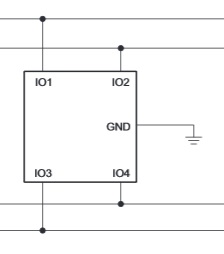I've never used CAN bus so I can't comment on that. Which leaves SPI, I2C, TTL serial and USB.
TTL serial is usually clocked at 115,200 baud, but many microcontrollers can run it at 1 Mb/s or higher. You'll have to check your microcontroller's datasheets and see if you can run it that fast. Obviously both ends must match. The advantage for TTL serial is that it requires only two wires.
I2C originally was limited to 100 Kb/s, then 400 Kb/s. The latest standard is 1 Mb/s. But it's possible your microcontroller can be clocked higher than that. Again, check your datasheets. Like TTL serial, I2C only requires two wires.
SPI is a whole different breed. Theoretically, it can run up to 50 Mb/s or so. I've run one with an SD card in a commercial product at 25 Mb/s without any problems. The downside is the SPI interface requires four wires. Actually, with just one slave on the bus, you don't need the chip select line unless it is required by the hardware interface. If you are only sending data to the slave, you might also be able to get rid of the MISO line, if the microcontroller lets you reassign it as a GPIO pin. In the case you're down to two wires, like the others.
Firmware overhead for the first three is minimal; TTL serial is probably the simplest. I2C and SPI are about the same.
You can forget about USB, even though it is potentially the fastest if you run USB 2.0. (USB 1.1 is only 12 Mb/s so it doesn't even compare favorably with SPI as far as speed.) The first problem with USB is you need to implement a host on one side and a slave on the other. This requires microcontrollers that have the interfaces, and USB host interfaces are generally only found on fairly high-end chips, Then there's the firmware required. Several kB of firmware. Good news is you can generally get a library from the manufacturer. Bad news is it will still take you weeks to get it working.
You'll have to provide your one ESD protection on the interfaces. There are lots of cheap chips that perform this function, like the TPD4E1B06 for 61ȼ at Digi-Key.




